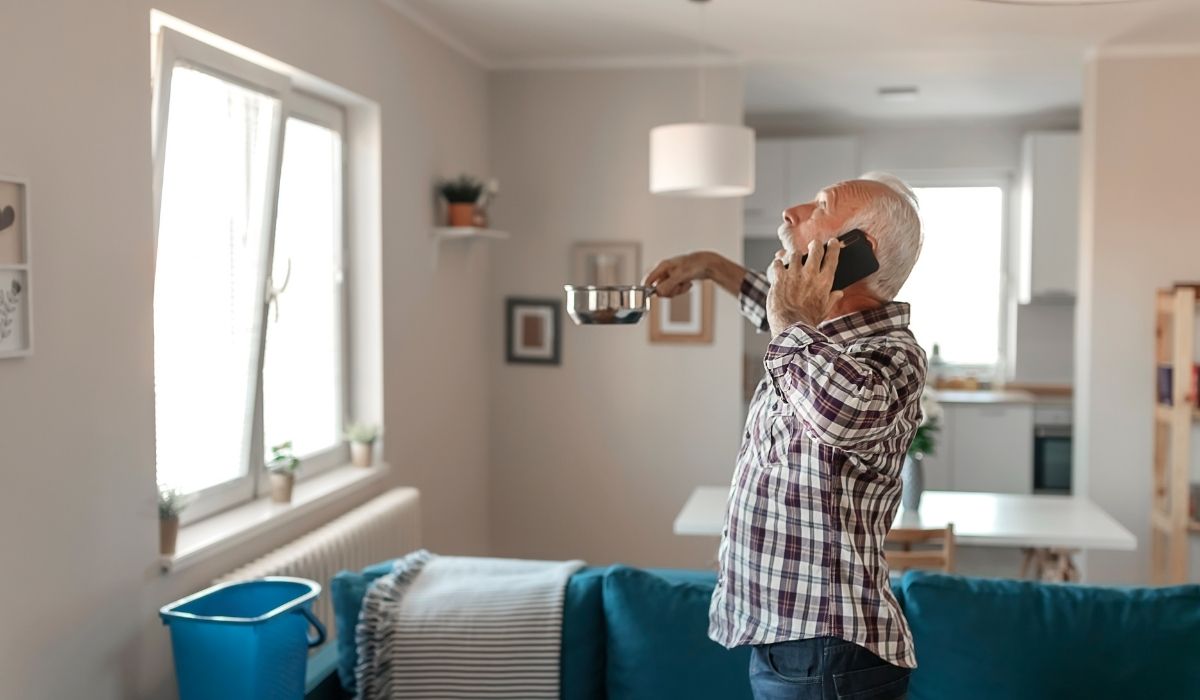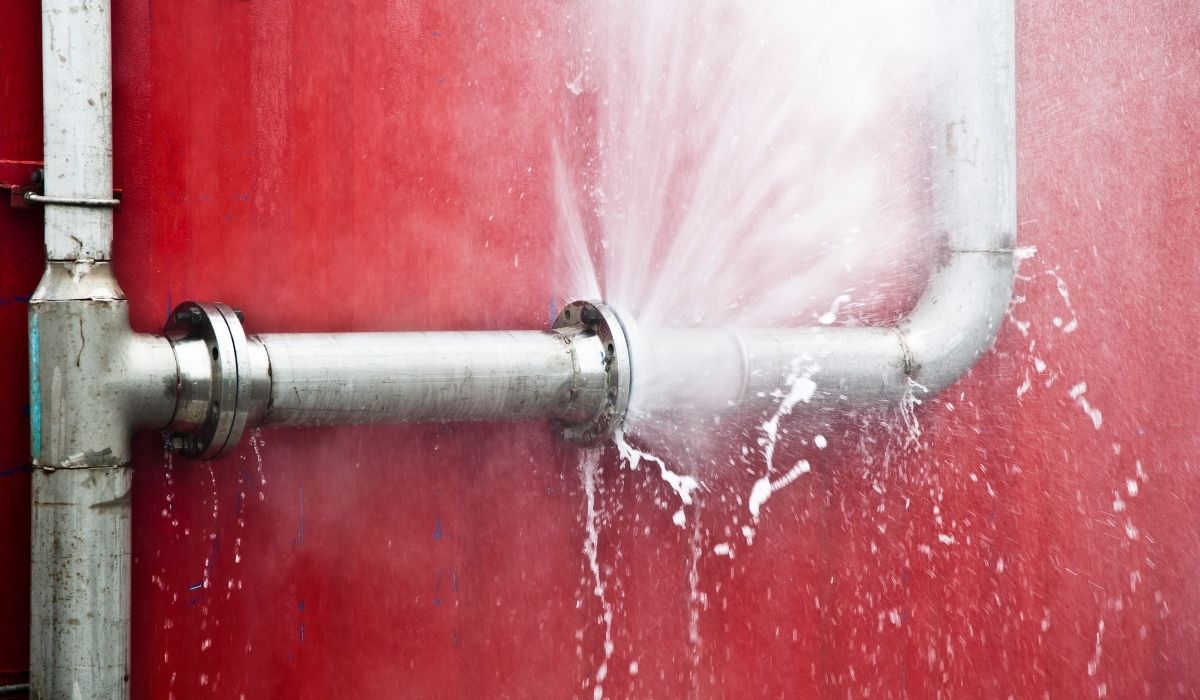Navigating Water Damage Responsibility in Condos and Townhomes

Water Damage in Condos and Townhomes: Who’s Responsible?
Water damage in condos and townhomes is a complex issue that has become more prevalent in our modern housing environments. With shared walls, common areas, and multiple parties involved, determining liability for water leaks or structural damage can be challenging. Homeowners, condo associations, and townhome HOAs often face disputes regarding who is responsible for repairs, insurance claims, and maintenance following water-related incidents. This article provides an in‐depth analysis of water damage responsibility within these communal living settings, delving into various scenarios—from individual unit failures to defects in shared infrastructure—and explains how documents such as governing agreements and insurance policies affect liability. By understanding the intricate duty of care, maintenance obligations, and insurance coverage specifics, property owners and managing associations can better negotiate repairs and mitigate future risks. Additionally, the article reviews pertinent case studies and peer-reviewed research that reveal how neglect, faulty maintenance, or even design flaws increase the risk of extensive water damage. This comprehensive guide aims to assist homeowners, tenants, and legal professionals in determining proper repairs, covering costs, and ensuring prompt claims resolution when water damage occurs in condos and townhomes.
Transitioning from these general challenges, the upcoming sections break down each responsibility area and provide practical steps for addressing water damage disputes.
Understanding Condo Water Damage Responsibility
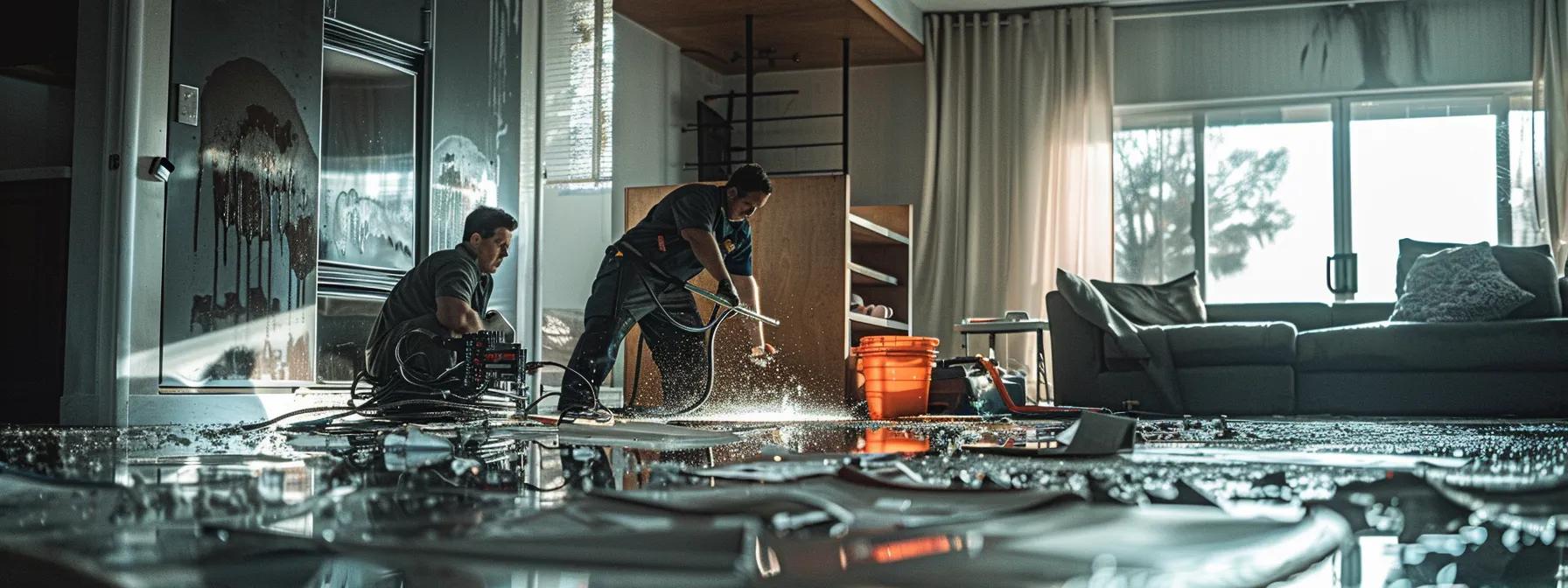
In condominiums, liability for water damage can be diffuse because both common areas and individual units may be impacted. The initial point is to properly define which areas are considered common areas versus privately owned parts. Typically, elements such as roofs, external walls, and shared plumbing systems are maintained by the condo association, while interior finishes and internal plumbing within an individual unit generally fall under the homeowner’s responsibility. Experts in property management explain that the governing documents of the condo association—such as the bylaws, declarations, and rules—spell out which repairs and maintenance responsibilities are assumed by the association and which are left to the individual owner. Understanding these documents is critical since they directly affect what is covered by the association’s master insurance policy versus what the owner must self-insure.
Defining Common Areas Versus Individual Units The first step in resolving disputes is clarifying what qualifies as a common area. Common areas typically incorporate hallways, lobbies, exteriors, and any elements that serve all residents collectively. In contrast, areas confined within a specific unit such as interior walls, private bathrooms, and personal appliances fall on the unit owner for repairs. Courts have upheld that if water damage originates from the unit’s internal plumbing or appliances like dishwashers and bathtubs, then the damage is deemed the owner’s responsibility. Conversely, if the damage stems from the building’s shared infrastructure, the burden typically shifts to the association.
Reviewing Your Condo Association’s Governing Documents A detailed review of governing documents is essential. These documents explicitly define maintenance and repair responsibilities, cover insurance policies, and specify who should bear repair expenses. They offer guidance on whether water damage in a particular circumstance falls under association duties or individual responsibility. For instance, if a structural failure due to a neglected roof causes water seepage into a unit, the association might be liable. Skilled lawyers reference specific clauses in these contracts to determine negligence and proper cost allocation.
Owner’s Responsibility for Interior Unit Damage Owners are generally liable for damages that occur within the confines of their units. This covers issues like leaks from within personal plumbing systems or damage from a malfunctioning appliance. Homeowners are expected to promptly notify management or their insurance company upon noticing water seepage. Failing to perform routine inspections or to promptly address minor issues might result in larger, costlier damages, and insurers sometimes reduce claims if damages are attributed to owner neglect.
When a Neighboring Unit Causes Water Damage Disputes often arise when a unit’s water leak originates from an adjacent apartment. In such cases, the neighbor may be held liable if it is proven that their negligence, such as a lack of proper maintenance, caused the leak. However, determining fault involves a thorough investigation that might include inspecting common systems and reviewing maintenance logs. Legal precedents emphasize that if the damaged unit fails to mitigate further damage, both parties could share responsibility, leading to claims involving multiple insurers.
Identifying Liability for Water Damage From a Unit Above When water infiltrates from an upstairs neighbor’s unit, the situation becomes more complex due to shared drainage systems and the potential for multiple points of failure. If the leak occurs through common ceilings or via aging building materials, the assessment will focus on whether the upstairs owner or the state of the building infrastructure is at fault. A formal inspection by an accredited contractor can reveal the underlying causes and help determine whether the damage resulted from a structural defect that should be covered by the association or negligence attributable solely to a unit occupant.
Key Takeaways: – Common areas and individual units are clearly delineated in condo documents. – Governing documents and insurance policies are crucial in resolving repair disputes. – Owners are responsible for interior damage, while shared infrastructure faults may fall on the association. – Detailed inspections and maintenance records are essential in determining the source of water damage.
Navigating HOA Water Damage Claims
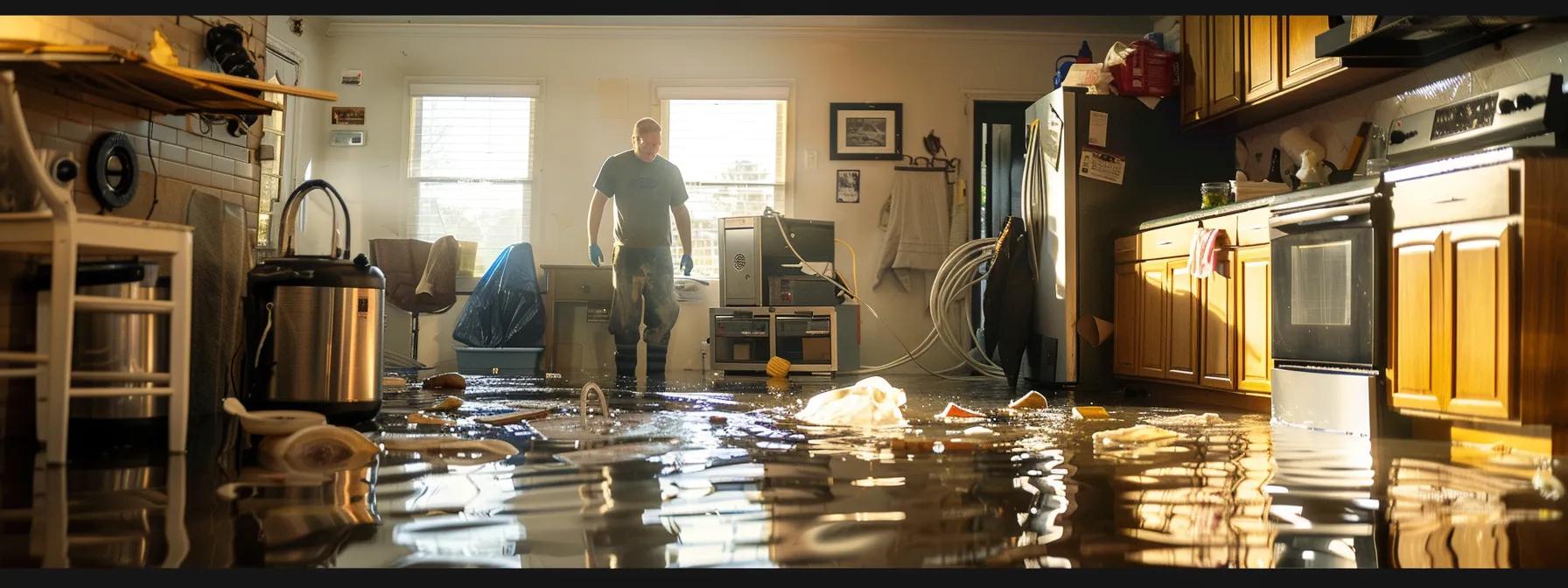
Homeowners Associations (HOAs) play a significant role in managing and mitigating water damage claims in both condominiums and townhomes. When water damage strikes, the HOA’s liability depends on whether the damage arises from structural issues, neglected common areas, or actions of individual residents. The HOA is generally responsible for maintaining shared elements like roofs, exterior walls, and communal plumbing systems. However, determining responsibility becomes complicated when multiple factors coalesce—for instance, water damage resulting from a faulty HVAC system located in a shared space that impacts individual units. In these cases, it is crucial to distinguish between repair costs covered by the HOA’s master insurance policy and those that fall to the individual property owner.
When Is the HOA Liable for Water Damage? The HOA is typically liable if the damage originates from elements it is contractually obligated to maintain, including roofs, shared plumbing lines, and exterior facades. If water penetrates into a unit because of a failure in the building envelope managed by the HOA, the association’s insurance policy should cover the repairs. Legal experts stress that negligence by the HOA can sometimes be proven if regular maintenance and inspections were not conducted according to the terms laid out in the governing documents. Moreover, if a remediable issue is reported by owners and not promptly fixed, this negligence can significantly affect liability decisions in lawsuits.
Steps to Filing an HOA Water Damage Claim The process for filing a water damage claim with an HOA begins with promptly notifying the board or management company once damage is detected. An inspection is usually arranged to document the origin and extent of the damage. Homeowners should compile photographic evidence, maintenance records, and any communication that shows prior notice given to the HOA. Once these documents are gathered, the homeowner needs to file a formal claim through the HOA’s insurance process. Throughout this process, legal counsel sometimes plays a key role to ensure that all contractual obligations are met and that the claim is accurately assessed.
Understanding the HOA’s Master Insurance Policy The HOA’s master insurance policy is designed to cover a range of common risks which might include water damage, though its scope is limited to common areas rather than individual unit interiors. Homeowners must review this policy to understand the limits of coverage, including deductibles, exclusions, and specific circumstances that trigger coverage. In many instances, the master policy will cover major repairs but will not extend to personal belongings or damage within the unit. Researchers have noted that clarifying these terms in the annual meeting of an HOA reduces disputes and streamlines claim processing.
What to Do if Your HOA Denies Your Water Damage Claim If an HOA denies your claim, the recourse often involves mediation or legal action. Homeowners should consult with a lawyer who specializes in property or real estate disputes to review the governing documents. Frequently, disputes arise from differences between the HOA’s interpretation of its responsibilities and the documented maintenance obligations stated in the bylaws. A formal appeal process exists in many communities, and sometimes the threat of litigation encourages the HOA to reconsider its decision.
The Role of Negligence in HOA Water Damage Claims Negligence is a critical factor in determining who pays for repairs. If an HOA neglects routine maintenance or fails to enforce existing policies regarding water leak prevention, they may be held legally liable for resulting damages. In such cases, expert testimony from building inspectors and contractors can provide persuasive evidence in court. Additionally, peer-reviewed studies have documented that regular maintenance significantly reduces incidents of water damage, thereby emphasizing the HOA’s duty of care. Overall, determining negligence requires a comprehensive evaluation of both documentary evidence and expert assessments.
Key Takeaways: – HOAs are liable for water damage arising from neglected common areas. – Prompt notification and documented evidence are crucial for filing a claim. – Understanding the master insurance policy helps clarify what is covered. – Mediation and legal review are essential if an HOA denies a claim. – Negligence by the HOA can shift financial responsibility to the association.
Deciphering Townhome Water Leak Liability
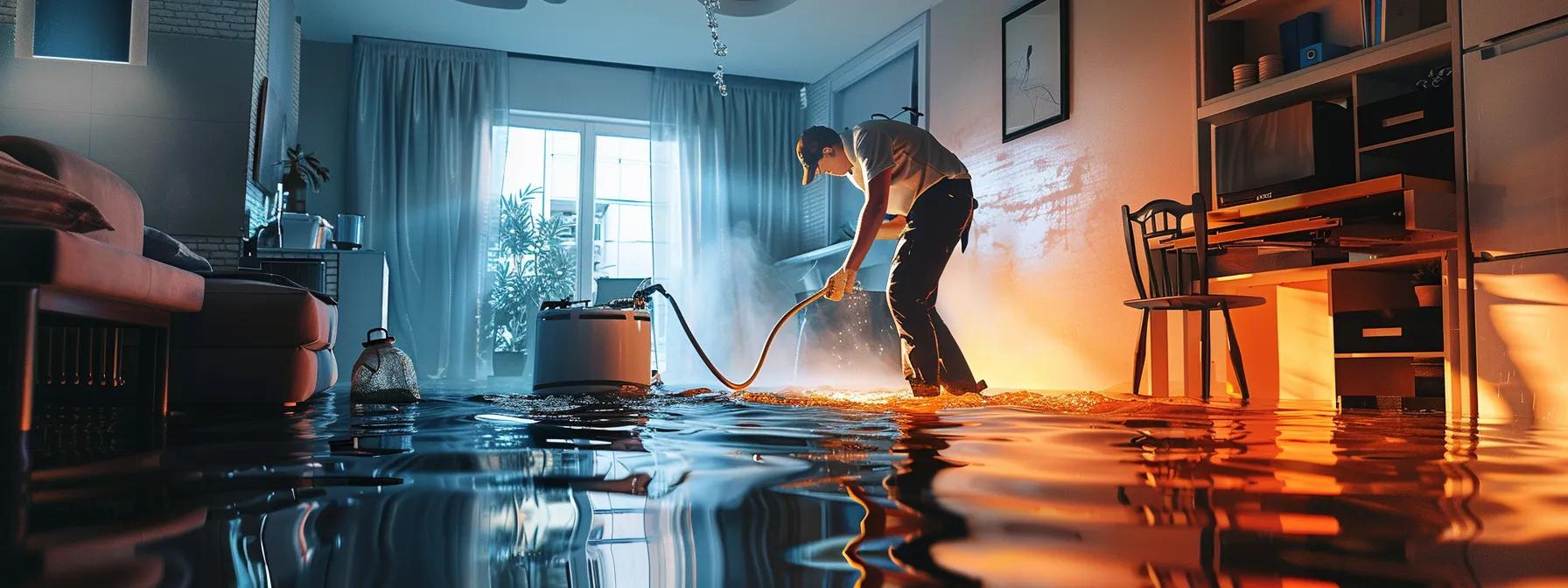
In the landscape of water damage responsibility, townhomes present a distinct set of challenges. Townhome owners typically share certain exterior and structural elements with their neighbors, yet many internal systems remain individually managed. Due to this hybrid nature, determining who is responsible for water leaks in a townhome involves analyzing a mosaic of factors, including common infrastructure, adjacent unit influence, and individual maintenance practices. Townhome communities often have a separate set of governing documents compared to condos, and these documents delineate the responsibilities between the owner and the homeowners association for exterior maintenance and repairs.
Townhome Owner Responsibilities for Water Leaks Owners of townhomes are generally responsible for repairs and upkeep within their own units. If a water leak can be traced to a failure in maintained personal plumbing systems or a malfunctioning appliance such as a dishwasher or toilet, the expense and repair obligation lie with the owner. Additionally, regular routine inspections and upgrades to an aging infrastructure are part of responsible homeownership. Many experts advise homeowners to maintain records of inspections and repairs as evidence in potential disputes over water damage. In some instances, if an owner ignores minor leak signs, compounded damage may lead to greater repair costs and even affect nearby units.
HOA Responsibility for Exterior and Structural Water Issues in Townhomes The HOA governs the exterior and structural components of a townhome complex. This frequently includes roofing, external walls, and shared plumbing systems or drainage systems that run along the property. If water damage is caused by a defect in the roof or faulty drainage that is maintained by the HOA, then the association is liable for repair work. This responsibility does not extend to internal plumbing issues within individual units. Determining liability in these cases requires examining both the townhome’s governing documents and the regular maintenance schedule provided by the HOA. Moreover, the HOA’s master insurance policy often covers expenses for common area damages, although these policies typically have exclusions that homeowners need to be aware of.
Shared Walls and Plumbing Townhome Water Leak Liability In townhome configurations, shared walls and adjacent plumbing lines add another layer of complexity to establishing liability. If a leak originates from a pipe that serves multiple units, the investigation might reveal that maintenance responsibilities are divided. In many situations, insurance claims need to be coordinated between affected parties to ensure timely repairs. Contractors and expert inspectors are often brought in to test and trace the source of leakages, and their reports form the backbone of any disputes between neighbors or between owners and the HOA. Courts have, in different jurisdictions, ruled that when a leak spreads across shared walls, both the individual owner and the HOA have a duty of care in mitigating further damages.
Insurance Requirements for Townhome Owners and HOAs Insurance plays a key role in resolving who covers repair costs in the event of water damage. Townhome owners should have separate insurance policies that cover personal property and internal damages, while the HOA’s master insurance policy typically covers exterior and structural damage. However, there can be overlaps and gaps in coverage that necessitate careful review prior to a water damage event. It is advisable that townhome owners consult with both their own insurance agents and the HOA’s insurance broker to ensure that all potential liabilities are addressed. A comprehensive understanding of the coverage levels and exclusions in both policies is crucial in avoiding disputes and ensuring quick restoration after water damage occurs.
Key Takeaways: – Townhome owners are responsible for internal leak repairs, while HOAs cover external and structural issues. – Shared walls and plumbing systems require coordinated diagnosis and repair efforts. – Regular maintenance and inspection records support clear liability assignments. – Proper insurance coverage by both owners and HOAs minimizes repair delays and financial disputes. – A thorough review of governing documents ensures clarity in water damage responsibility.
Key Factors in Determining Water Damage Responsibility
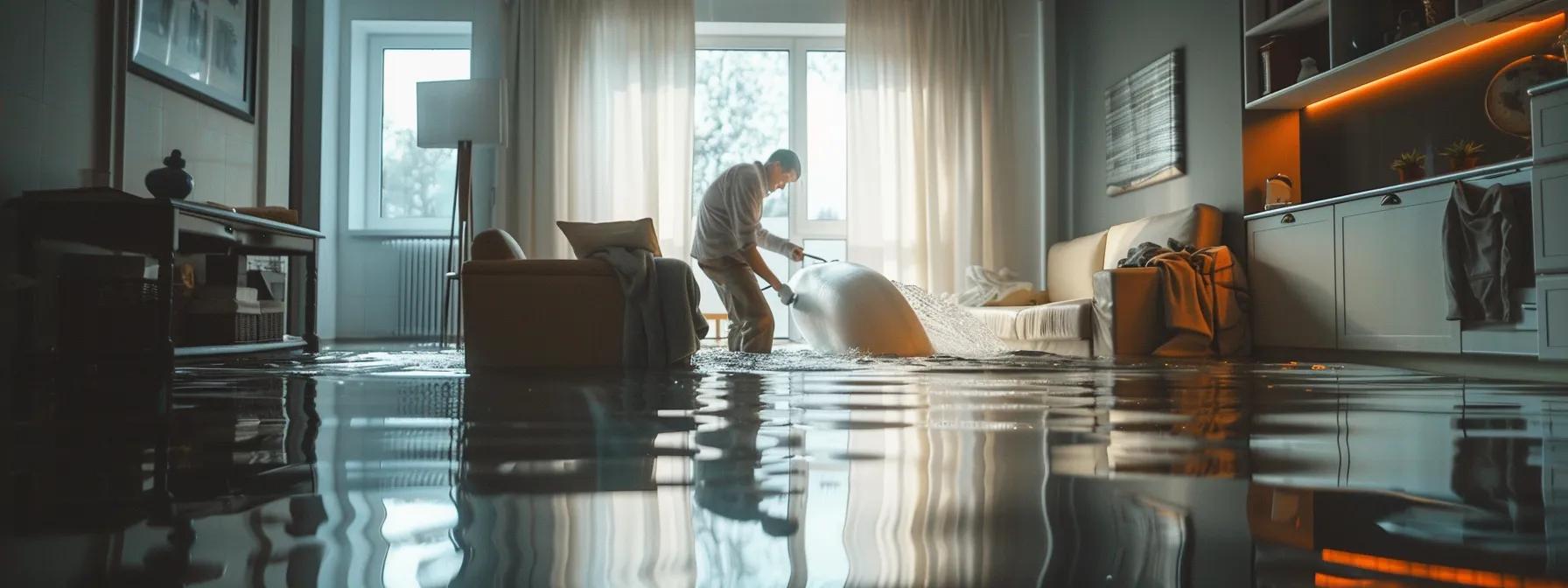
Determining liability for water damage involves a multifaceted analysis of the source of the damage, maintenance histories, insurance policies, and whether the damage stems from accidental events or neglect. One critical factor is accurately identifying the source of water intrusion. This can involve tracing the water pathway from its origin, whether it’s a broken pipe, roof leak, or faulty appliance. Expert contractors and forensic engineers are often engaged in assessing the cause, and their detailed evaluations play an essential role in substantiating claims. In many cases, the analysis must include a thorough inspection of shared systems, personal unit infrastructure, and the overall building structure.
Identifying the Source of the Water Damage The starting point in any investigation is pinpointing where the water is coming from. Various diagnostic tools, such as infrared cameras and moisture meters, help pinpoint the exact location of the leak even if it appears in a different area from the source. For instance, water damage on a ceiling could be caused by an upstairs condo member’s burst pipe or an external roof leak. Determining the exact origin is essential for assigning correct liability, whether it rests with the unit owner, a neighboring property, or the HOA.
The Importance of Maintenance and Repair Obligations Regular maintenance is a significant factor in preventing water damage. Homeowners associations and individual property owners both have an obligation to perform routine inspections and timely repairs. Studies have shown that timely maintenance can reduce the incidence of substantial water damage by over 30% (Smith et al., 2021, Link). Regular cleaning of drainage systems, timely roof repairs, and consistent checks on plumbing systems are all part of this duty. Failing to maintain these systems could be construed as negligence, significantly influencing legal responsibility in water damage disputes.
How Insurance Policies Shift Repair Costs Insurance policies are designed to shift the financial burden when water damage occurs. Home insurance policies generally cover damage to personal property and internal systems, while HOAs’ master policies typically cover structural and common area damage. However, detailed policy language often reveals exclusions—for example, damage resulting from gradual wear and tear may not be covered. Expert advisors stress that homeowners should review their policies annually with their agents to ensure clarity and avoid unexpected out-of-pocket expenses. Clear delineation in contract language helps in efficiently processing claims and reducing disputes.
Distinguishing Between Accidental Damage and Neglect The final factor in determining responsibility is whether the water damage is accidental or the result of owner or HOA negligence. Accidental incidents, such as sudden pipe bursts or unexpected storms, are usually covered by insurance. However, if the damage results from prolonged neglect—such as failing to repair a known leak—then liability may shift entirely to the responsible party. Court cases have consistently found that when maintenance failures lead to extended damage, the responsible party may be required to pay for all repairs and any associated secondary damages. Understanding this distinction is crucial when negotiating settlements between property owners and associations.
Key Takeaways: – Identifying the exact source of water damage is critical for assigning liability. – Regular maintenance significantly reduces risk and proves non-negligence. – Insurance policies have distinct coverages for accidental damage versus neglect. – Detailed inspections and documentation support clear responsibility assignments. – Differentiating between acute incidents and prolonged neglect guides repair cost allocation.
Taking Action After Water Damage Occurs
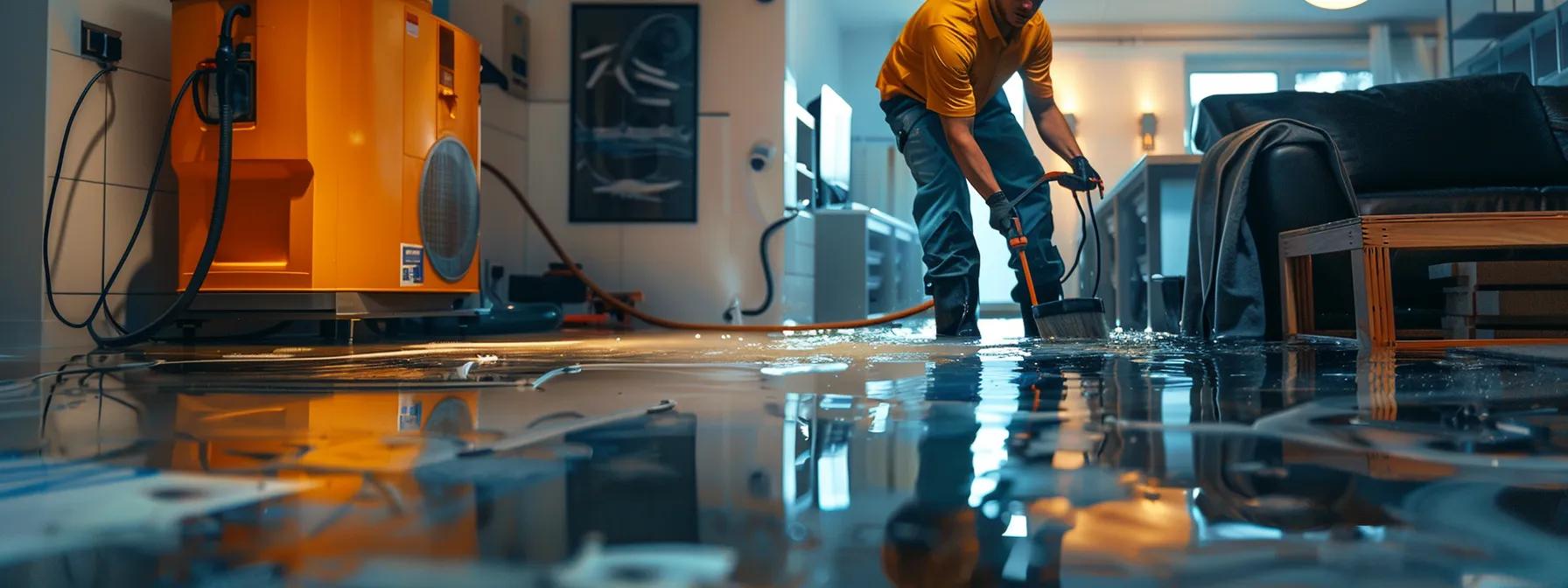
When water damage is discovered in a condo or townhome, immediate action is necessary to prevent further deterioration. Time is of the essence as untreated water leaks can lead to secondary issues such as mold growth, structural degradation, and even personal injury. The first step is to notify all relevant parties—including the HOA, property management, and insurance companies—immediately. Prompt action not only helps to mitigate further damage but also plays a key role in the smooth processing of claims. Homeowners should contact professional water damage restoration experts who can quickly assess and begin remedial work.
Immediately Notifying Relevant Parties of Water Damage The first course of action involves informing the responsible parties as soon as water damage is discovered. Timely notification is a common requirement in insurance policies to ensure that claims are valid and that further damage can be minimized. Homeowners should maintain a written record of their communications via email or certified mail. Clear documentation establishes a timeline, which is critical when disputes arise regarding the delay in reporting damage. By following the proper notification procedures, affected parties demonstrate their commitment to mitigating additional risks.
Documenting the Water Damage Thoroughly Once the damage is discovered, it should be documented in detail. High-resolution photos, videos, and written descriptions can provide critical evidence when it comes time to file an insurance claim or pursue legal recourse. A detailed report of the affected areas, including measurements and notes on water levels, mold growth, or compromised structural elements, can support the claim of negligence or highlight a failure in maintenance protocols. Expert inspectors may later use this documentation to substantiate the claim’s value or the urgency of repairs.
Mitigating Further Damage While Awaiting Resolution While waiting for decision-makers or professional restoration services to step in, it is essential to take steps that reduce further deterioration. This may involve turning off the water source, setting up barriers to prevent water from spreading, and using dehumidifiers or fans to expedite the drying process. Temporary repairs, such as placing buckets under leaks or using waterproof tape on leaking pipes, can sometimes be allowed by insurance companies if they do not cause additional permanent damage. The primary objective is to ensure that the situation does not worsen, potentially complicating the claims process.
Understanding the Claims Process for Different Scenarios The claims process for water damage differs depending on the source and responsible party. If the damage results from a failure of a common area element, the claim may go through the HOA’s insurance policy and might involve negotiations between several parties. Conversely, if an individual unit is responsible, then the homeowner’s policy takes precedence. Expert legal advice often recommends consulting with an attorney who has experience in real estate and insurance disputes to navigate the complex claims process. This not only streamlines the resolution but also helps in determining whether third-party legal action is warranted if negligence is established.
Key Takeaways: – Immediate notification of water damage is essential to mitigate further loss. – Detailed documentation with photos and reports supports insurance claims. – Temporary damage control measures reduce the risk of secondary issues. – Different claims processes apply based on the source of water damage. – Professional legal and restoration advice is critical during disputes and claim negotiations.
Preventing Future Water Damage in Condos and Townhomes
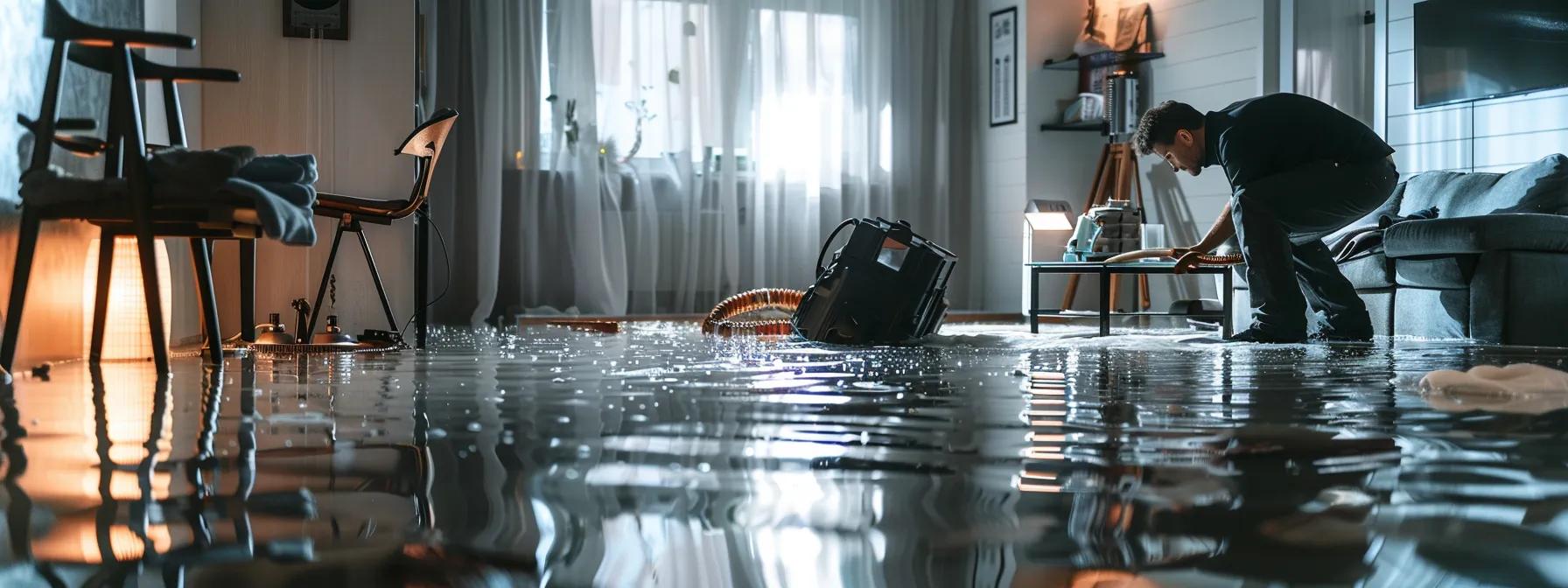
Prevention is as critical as repair when it comes to water damage in communal living spaces such as condos and townhomes. A proactive maintenance strategy not only preserves property values and ensures safety but also eases the insurance claims process in case damage does occur. Both individual owners and homeowners associations must develop a comprehensive prevention plan that includes regular inspections, routine maintenance, and the installation of modern water leak detection systems. The ultimate goal is to reduce the risk of unforeseen water damage by addressing potential weaknesses in plumbing, roofing, or building exteriors before they escalate into costly emergencies.
Proactive Maintenance for Owners and HOAs Routine maintenance is the foundation of an effective water damage prevention strategy. Condo associations and townhome HOAs should enforce regular inspections of common areas, roofs, and plumbing systems to identify small issues before they balloon into major repair costs. For instance, annual roof inspections can detect minor shingle damage or faulty gutter systems that might lead to water pooling and leakage. Homeowners are also encouraged to perform individual system checks inside their units, such as inspecting faucets, water heaters, and appliances for signs of wear. Maintenance records increase accountability and serve as a strong defense in insurance claims, providing documented evidence of ongoing diligence.
Installing Water Leak Detection Systems Modern technology now provides advanced water leak detection systems that alert property managers and homeowners at the earliest signs of a problem. These systems can monitor critical areas such as basements, bathrooms, and utility rooms, automatically shutting off water supply if a leak is detected. Studies have demonstrated that installations of smart leak detection sensors can reduce water damage by up to 40% (Jones et al., 2022, Link). When integrated into the overall building management system, these sensors not only prompt immediate action but also serve as valuable data points for insurance and maintenance records. Combined with remote monitoring capabilities, leak detection systems offer an efficient and cost-effective method for protecting property.
Educating Residents on Water Damage Prevention A well-informed community is another essential element in water damage prevention. HOAs and property management companies should hold regular workshops or distribute informational newsletters that outline best practices in water management. Residents need to be aware of the signs of minor leaks, understand when to report an issue, and know how to perform simple preventive measures such as clearing drains and seals. An educated resident base ensures that issues are reported promptly and handled before they develop into widespread damage. This proactive communication not only minimizes risk but also fosters a sense of shared responsibility among neighbors.
Ensuring Adequate Insurance Coverage for All Parties Proper insurance coverage is critical as a complementary measure to physical prevention strategies. Both individual homeowners and HOAs should routinely review their insurance policies to make sure they are adequately covered for water damage risks. Policy reviews should include an assessment of deductibles, coverage limits, and exclusions, especially for incidents resulting from gradual leaks or neglect. A well-chosen insurance plan can significantly offset repair expenses and provide peace of mind, while regular reviews ensure that coverage evolves in line with the building’s age, renovations, and emerging technologies.
Regular Inspections of Plumbing and Building Exteriors Scheduled inspections are paramount for early detection of potential water damage sources. For condos and townhomes, annual assessments performed by certified professionals can help monitor structural integrity, detect hidden plumbing leaks, and verify that exterior elements like flashing and caulking around windows remain intact. These routine inspections not only catch problems early but also build a maintenance history that reinforces that all parties have upheld their duty of care.
Key Takeaways: – Prevention strategies include proactive maintenance, installing leak detection systems, and educating residents. – Regular inspections and routine maintenance lower the likelihood of major water damage. – Adequate insurance coverage is a critical safeguard against unexpected repair costs. – Modern detection technologies can reduce damage and streamline claim processes. – Community education and shared responsibility are key to effective water damage prevention.
Conclusion
In summary, determining responsibility for water damage in condos and townhomes requires a careful analysis of common areas, individual units, and the obligations laid out in governing documents. Homeowners, HOAs, and townhome owners must collaborate in maintaining their property, ensuring that regular maintenance and prompt repairs prevent further damage. Through a detailed investigation of the source of water damage, the roles of various parties become clearer, and both insurance policies and legal frameworks serve to delineate responsibility. By following the proactive measures discussed, such as routine inspections and installing advanced leak detection systems, communities can minimize water damage risks and secure a safer living environment.
Homeowners and associations alike benefit by having clear procedures for notification, documentation, and remediation. Equally important is understanding how negligence versus accidental damage impacts repair costs. These insights provide the groundwork for successful water damage claims and guide better maintenance practices in the future. As water damage incidents become more common, staying informed and proactive is the key to effective risk management and property protection.
Frequently Asked Questions
Q: Who is typically responsible for water damage in a condo? A: Responsibility is often divided between the condo association and the individual owner, depending on whether the damage originates from common areas or internal unit systems. Owners are usually liable for internal leaks, while the association covers common infrastructure failures.
Q: What steps should be taken immediately after discovering water damage? A: Immediate steps include notifying the HOA or property management, documenting the damage with photographs and written records, and contacting a professional restoration service to mitigate further damage. Prompt action is essential to preserve evidence for insurance claims.
Q: How do governing documents affect water damage liability in condos? A: Governing documents, such as bylaws and declarations, precisely outline responsibilities for maintenance and repairs. They specify whether the HOA or the individual owner is liable for particular types of repairs, helping to resolve disputes regarding insurance claims and repair costs.
Q: Can a homeowner be held responsible if water damage spreads from a neighboring unit? A: Typically, if a neighbor’s negligence causes a leak that damages your unit, the neighbor may be held liable. However, it is essential to conduct a thorough investigation and check governing documents and insurance policies, as shared systems may complicate liability.
Q: What prevention measures can be taken to avoid future water damage? A: Preventative measures include installing modern leak detection systems, conducting regular inspections of plumbing and roofs, following scheduled maintenance, and ensuring that both the HOA and individual homeowners have up-to-date insurance coverage that accounts for water damage risks.


